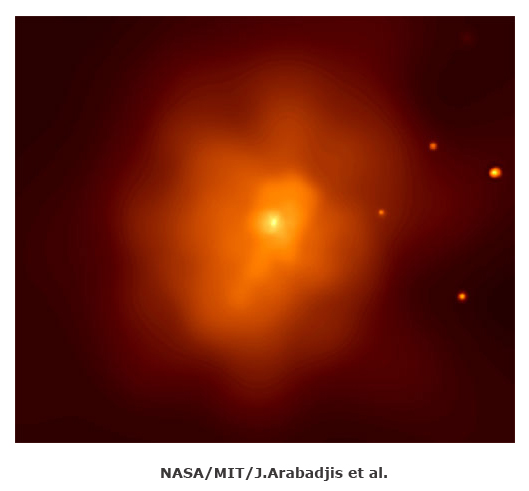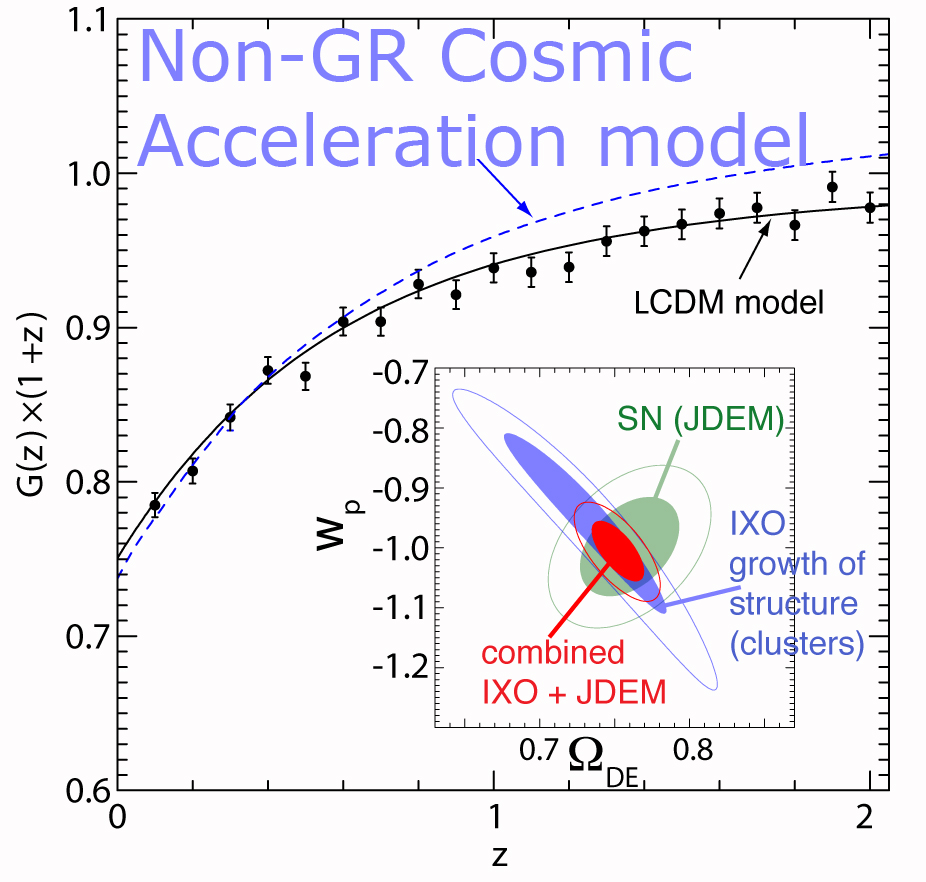 |
Goddard Space
Flight Center NASA > GSFC > Astrophysics Science Division > IXO |
|
Nature of Dark Matter and Dark EnergyHow does galaxy cluster evolution constrain the nature of dark matter and dark energy? Structure formation is a multi-scale problem. Galaxy formation depends on the physical and chemical properties of the intergalactic medium (IGM). The IGM, in turn, is affected by energy and metal outflows from galaxies. Detailed studies of the IGM in galaxy clusters are now limited to the relatively nearby Universe (z < 0.5). IXO will measure the thermodynamic properties and metal content of the first low-mass clusters emerging at z ~ 2 and directly trace their evolution into today´s massive clusters. Precise abundance profiles from IXO measurements will constrain how the metals produced in the galaxies are ejected and redistributed into the intra-cluster medium. 
Chandra image of the cluster of galaxies EMSS 1358+6245. Credit: NASA/MIT/J.Arabadjis et al. Click the image for a larger view. The mystery of Dark Energy can be studied by observing the expansion history of the Universe and the growth of matter density perturbations. X-ray observations of galaxy clusters with IXO will provide both tests, complementing other planned cosmological experiments. Combining the distance-redshift relation and growth of structure data will dramatically improve constraints on the Dark Energy equation of state. These IXO data also test whether the cosmic acceleration is caused by modifications to Einstein´s theory of gravity on large scales. Galaxy cluster observations also provide their own distance-redshift test by assuming that the mass fraction of hot intra-cluster gas is constant with redshift. IXO will provide the precise temperature measurements essential to determine the cluster masses. IXO observations of 500 relaxed clusters will give an independent distance-redshift measurement. The spectral capabilities of IXO will provide direct checks on the relaxed state of the cluster through velocity measurements of the intra-cluster medium. 
The growth of structure as a function of redshift for simulated observations with IXO of 2000 clusters at z=0–2. The dashed line shows the growth expected in a non-GR models of cosmic acceleration. The inset shows improvements in the constraints on the dark energy equation of state from combination of distance-redshift and structure growth methods. Courtesy of A. Vikhlinin et al. Click the image for a larger view. For more information, refer to IXO Astro 2010 Decadal White Papers: Cosmological Studies with a Large-Area X-ray Telescope, A. Vikhlinin et al. |